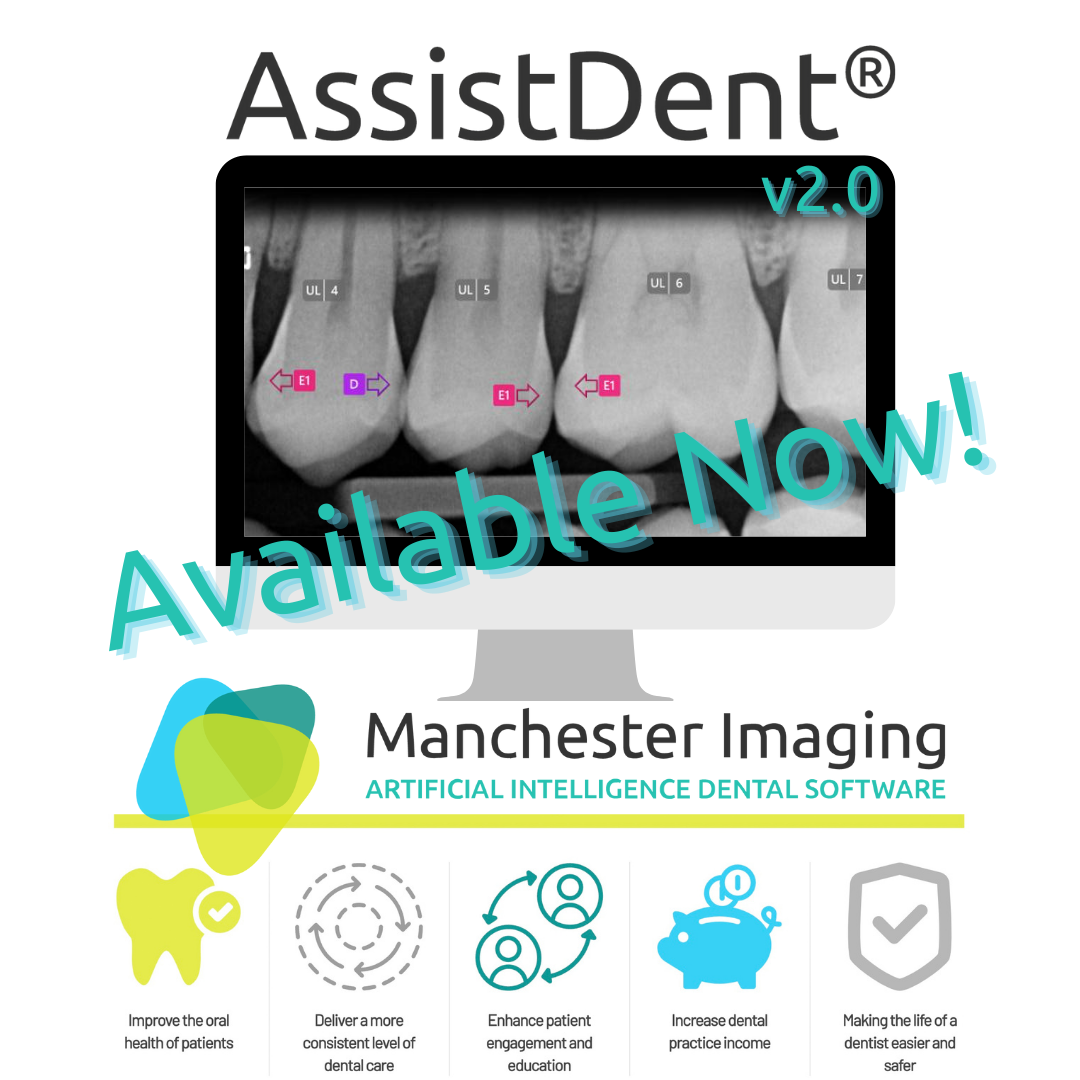The constraints of COVID-19 have placed major strains on dental schools, particularly in the
safe continued training of dental students where the practical, patient-orientated elements
have faced significant challenges during lockdowns. Recognising the importance and
ongoing impact of these issues – for universities, students, dental practitioners and the wider
public – Innovate UK, the UK’s innovation agency, awarded funding to adapt and repurpose
AssistDent® machine learning algorithms, so that dental students can now improve their
dental radiography analysis ability remotely.
AssistDent® is an aid in the diagnosis of early dental disease and is already used by dentists and in dental schools across the UK and Europe as a prompting system to help when analysing bitewing radiographs, looking for early signs of enamel proximal caries.
The Innovate UK funding enabled Manchester Imaging, the company behind the AI-based software, to adapt and repurpose their technology to analyse dental radiographs, to deliver a remotely accessible intelligent learning platform for dental students that can record a student’s clinical assessment of a radiograph, automatically interpreting and evaluating it against a gold standard assessment.
At an early phase of the research process and to evaluate a novel application of AI-based computer aided diagnosis in dentistry training, a pilot comparative study was undertaken, with 24 third-year dental student volunteers randomly divided into control and experimental arms. Both arms examined the same images using the same graphical user interface, with the AssistDent caries detection function disabled for the control arm.
Results of the pilot study demonstrated an increased ability in the detection of enamel-only proximal caries by the students using AssistDent, showing a mean sensitivity level of 0.80 (95%CI ± 0.04), increased from 0.50 (95%CI ± 0.13) p<0.01 shown by students not using AssistDent. This improvement in ability was achieved without an increase in false positives.
Mean false positives per bitewing radiograph recorded by students when using AssistDent was 2.64 (95%CI ± 0.57), and by students without using AssistDent was 2.46 (95%CI ± 1.51).
A set of example radiographs with expert annotations is available through the platform as a gold standard for student use, or tutors can provide their own images and annotations.
Within the pilot study, gold standard annotation of caries was obtained from a panel of five dentomaxillofacial radiologists and one Professor of Restorative Dentistry, each of whom performed clinical evaluation on a set of images and provided annotation on the location and grade of caries, resulting in a gold standard set of 1,972 examples of enamel-only proximal caries for algorithm training and evaluation.
The graphical user interface enables students to add their clinical assessment, marking up identified pathologies. A machine learning algorithm automatically analyses the image and intelligently compares the tutor’s gold standard analysis with that of the student, taking the underlying mouth anatomy into account and giving a detailed breakdown of all the pathology identified (true positives), as well as missed (false negatives) and incorrectly classified (false positives), providing the tutor with a score for each image. Students can now get a detailed breakdown of their performance and learning progress, in conjunction with their tutors, without needing to physically attend the dental school.
The project to adapt Manchester Imaging’s existing technology was funded through Innovate UK’s “Business-led innovation in response to global disruption” competition – a rapid response funding programme which received more applications than all their competitions for the previous year, combined.
Neil Morgan, Head of Fast Start at Innovate UK said:
“The Covid-19 situation is not just a health emergency, but also one that affects the economy and society. With that in mind, Innovate UK launched this Fast Start funding, seeking smart ideas from UK innovators. Like other primary care providers, the dental sector has been particularly impacted, so AssistDent’s technology is particularly timely and useful as we seek to get through and recover from the pandemic.”
The award for AssistDent® is clear evidence of governmental recognition of the need to financially support the development of new technologies across the dental profession, and to help companies innovate for public health.
Tony Travers, CEO at Manchester Imaging, comments:
“We are delighted to have received this support from Innovate UK, which has helped facilitate the early and rapid adaptation of our technology to help address current pressing dental educational needs during this pandemic. The sector has been particularly hard hit by COVID-19, both functionally and economically, and we hope the technology now available will continue to assist both institutions and students, harnessing intelligent automation and increasing opportunities for online, remote clinical learning.”
For more information about AssistDent® and this project, please contact:
Tony Travers, CEO, Manchester Imaging Limited
E: [email protected]
M: +44 7776 481645
W: www.manchester-imaging.com
© Manchester Imaging Ltd.



